Written by Benjamin Kurata
I’ve had the benefit of traveling to many different locations and training with many different departments and agencies. It’s been a pleasure and an honor to train with the men and women who are on the front line protecting our country and society. That being said, a universally neglected area is proper preventative maintenance of the semiautomatic pistols, rifles, and shotguns issued and carried. IF YOUR WEAPON DOESN’T WORK, YOU CAN’T PROTECT YOURSELF, YOUR PARTNER, OR OTHERS!
Cleaning and Lubrication:
Here, I have to defer to, and ask you to do that most unnatural thing: read the Owner’s Manual that comes with every firearm. If you don’t have a copy, you can go to the manufacturer’s website and download a copy, or see your department RangeMaster. (S)he will likely have a copy. The other unnatural thing that I will ask of you is to follow the instructions. Light lubrication means a light coat of lubricant, not half of the 4 oz. squeeze bottle of CLP. We all have our favorite concoctions and potions to use on our firearms, just keep in mind two things:
1. In general, solvents are good at dissolving carbon, fouling, and copper from the surfaces of your firearm. They are not good at lubricating the same surfaces. A really good solvent will strip away all the residue on the surface being treated and LEAVE THE METAL BARE AND UNPROTECTED.
2. In general, lubricants are good at protecting metal-to-metal contact surfaces and metal parts / finishes from corrosion, but they are not necessarily good as a solvent.
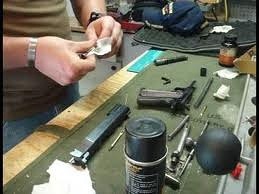
Which means, yes, in general, you will have to use two bottles of magical mystery stuff. I’m sure in saying this I will get barraged with spam about the latest and greatest whatever, and if it’s out there, please feel free to hook me up with lots of free samples. I’m just saying that I haven’t encountered the ultimate all-in-one product yet.
In a future article I’ll go over general guidelines for preventative maintenance for semiautomatic pistols, but for now, let’s assume that you have successfully disassembled, cleaned, and lubricated both your weapon and any associated magazines. Yes, I am a proponent of cleaning and lightly lubricating your magazines every time you clean and lubricate your weapon. Let’s think about it. Magazines are your weapon’s ammunition feeding system. If a magazine fails, your weapon will likely no longer fire with that magazine. That’s why we practice stoppage clearance drills every time we practice. (See previous article on magazine maintenance and function testing.)
To Function Test a Semiautomatic Pistol:
- Make certain that there is no live ammunition in the pistol or any of the associated magazines. Check a second time.
- With the hammer down / striker in the “fired” position, insert and lock an empty magazine into the magazine well. This checks to see that the magazine locking notch(es) line up with magazine release, and the magazine release spring has enough power to retain the magazine in the magazine well..
- Smartly rack the slide to the rear. The slide should stay open. This tests the magazine follower, magazine spring, and the alignment of the follower with the slide stop. If the slide does not stay open, you may have reassembled the magazine with the spring backwards or upside down.
- Press the magazine release. The magazine should fall free of the magazine well under its own weight. If it doesn’t, the magazine tube may be bent.
- Using the slide stop / catch, release the slide and let it fly forward under it’s own action. DO NOT “RIDE” the slide with the support hand. You are testing the recoil spring’s capability to drive the slide into battery and lockup.
- If your handgun has an external hammer and full cock notch, press under the hammer spur, attempting to push the hammer into the fired position without pressing the trigger. If the hammer slips or wobbles, the handgun is unsafe, do not use it, turn it over to a qualified armorer immedi ately!
- If your handgun has a safety lever, put it on “safe”. Press the trigger. Nothing should happen.
- If your handgun has a decock lever (like a SIG), decock. Again, nothing should happen except the hammer being lowered safety to the decock notch.
- With the muzzle pointing in a safe direction, take the safety off (if applicable), and press the trigger AND HOLD THE TRIGGER IN THE REARMOST POSITION OF ITS TRAVEL. The hammer / striker should f
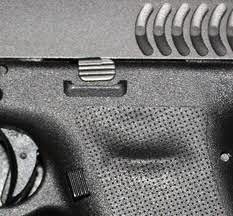 all normally.
all normally.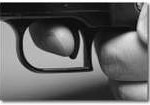
- Continue to HOLD THE TRIGGER TO THE REAR and manually cycle the slide.
- SLOWLY let the trigger go forward until you feel / hear the disconnector reset “click”.
- Press the trigger. Again, you should get a normal hammer / striker fall. Steps 9 -12 test the disconnector, the integrated safety mechanism that makes the semiautomatic weapon semiautomatic. A broken disconnector means your wea pon may go full auto on you. While that sounds exciting, it really is a nasty suprise!
- Repeat steps 1 – 12 with all remaining magazines.
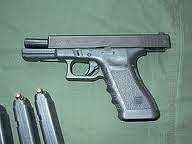
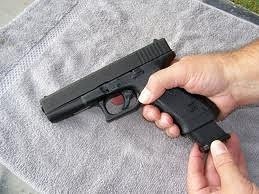
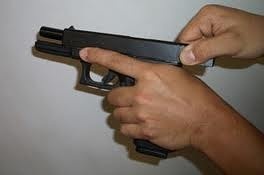
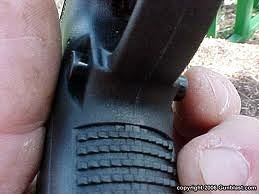
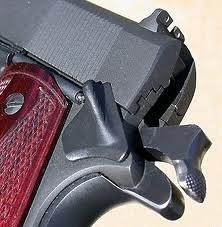
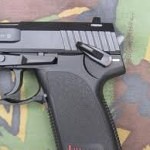

If you are thinking, “That’s a lot of work!”, consider the following:
1. When you get the hang of it, it will take you 5 – 10 seconds to function test your weapon with each magazine. Most officers carry 3 magazines, so 15 – 30 seconds total!
2. Do you really want to charge your weapon with live ammo, holster it, and not know if it is mechanically functioning properly? A gunfight is not the place to perform a function test!
Next up: function testing the AR-15 (and similar) patrol rifle and the semiautomatic or pump shotgun.







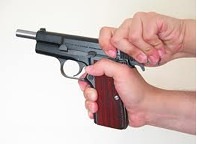 There is no shortage of techniques for clearing a stoppage or malfunction; just trying to explain the difference between the two sets off a never ending debate. Unfortunately, those who have time to engage in never ending debates lose track of what is important.
There is no shortage of techniques for clearing a stoppage or malfunction; just trying to explain the difference between the two sets off a never ending debate. Unfortunately, those who have time to engage in never ending debates lose track of what is important. 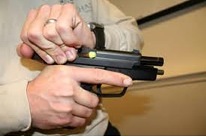 (1) Slide or bolt forward, AND
(1) Slide or bolt forward, AND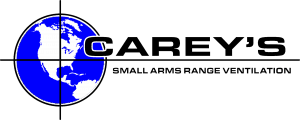 Action Target believes only the best of everything should be associated with all we do. One example of our continuous search for the best is our partnership with Carey’s Heating and Air Conditioning, Inc. After extensive review, we have aligned ourselves with Carey’s to use their heating, air conditioning and ventilation systems in order to provide our indoor range customers with the safest air conditions in the world. Action Target feels it is important for our readers to know more about Carey’s and the integral role they play in the industry. They are not only another provider of air flow products, Carey’s has been an innovator and pioneer with their systems. This article provided by Carey’s below is a little insight into the company. After reading, it will be clear to see why Action Target recommends their systems for our indoor projects.
Action Target believes only the best of everything should be associated with all we do. One example of our continuous search for the best is our partnership with Carey’s Heating and Air Conditioning, Inc. After extensive review, we have aligned ourselves with Carey’s to use their heating, air conditioning and ventilation systems in order to provide our indoor range customers with the safest air conditions in the world. Action Target feels it is important for our readers to know more about Carey’s and the integral role they play in the industry. They are not only another provider of air flow products, Carey’s has been an innovator and pioneer with their systems. This article provided by Carey’s below is a little insight into the company. After reading, it will be clear to see why Action Target recommends their systems for our indoor projects.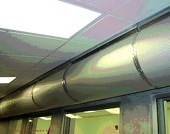 Specifically, the radial air diffusers and plenums are custom built and have been tested to provide laminar air flow at the firing line after proper commissioning. “Laminar” flow is a steady, even airflow required to safely clear contaminate from the respiratory zone of the users of the range. These special diffusers are not available from a standard diffuser supplier. The control system and programming uses standard parts from Johnson Control, but the programming of the equipment is critical. The programming is done by an experienced programmer who has worked on all of the ranges that Carey’s has completed. It is also critical to have the control system installed and tested to automatically shut down if unsafe conditions are detected. This will protect both the occupants of the range and the adjoining areas.
Specifically, the radial air diffusers and plenums are custom built and have been tested to provide laminar air flow at the firing line after proper commissioning. “Laminar” flow is a steady, even airflow required to safely clear contaminate from the respiratory zone of the users of the range. These special diffusers are not available from a standard diffuser supplier. The control system and programming uses standard parts from Johnson Control, but the programming of the equipment is critical. The programming is done by an experienced programmer who has worked on all of the ranges that Carey’s has completed. It is also critical to have the control system installed and tested to automatically shut down if unsafe conditions are detected. This will protect both the occupants of the range and the adjoining areas.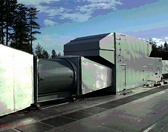 Carey’s Heating and Air Conditioning, Inc. has been an innovative force in range ventilation design for over 15 years.
Carey’s Heating and Air Conditioning, Inc. has been an innovative force in range ventilation design for over 15 years.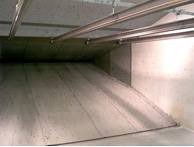 First up is the renovation of Dearborn Police Departments (DPD) firing range. Located in the basement of Michigan’s DPD, this project took careful planning and execution. With the help of several dedicated companies, Action Target managed the removal of DPD’s existing bullet trap, modified the existing target systems, cleaned the range and installed two 16′
First up is the renovation of Dearborn Police Departments (DPD) firing range. Located in the basement of Michigan’s DPD, this project took careful planning and execution. With the help of several dedicated companies, Action Target managed the removal of DPD’s existing bullet trap, modified the existing target systems, cleaned the range and installed two 16′ 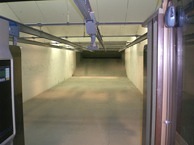 Congratulations to Dearborn Police Department and all those involved!
Congratulations to Dearborn Police Department and all those involved!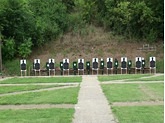 A special thanks goes to Officers Bob Allen and Greg Lee, City and State Officials, Metro Nashville Procurement, Action Target Great Lakes Territory Manager – Jason Snell, Action Target Project Manager – Brian Sanders, and many others for their hard work and a job well done!
A special thanks goes to Officers Bob Allen and Greg Lee, City and State Officials, Metro Nashville Procurement, Action Target Great Lakes Territory Manager – Jason Snell, Action Target Project Manager – Brian Sanders, and many others for their hard work and a job well done!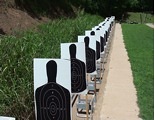
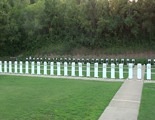
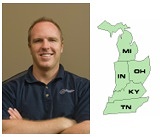 801-377-8033 ext. 158
801-377-8033 ext. 158